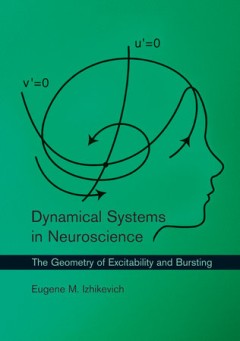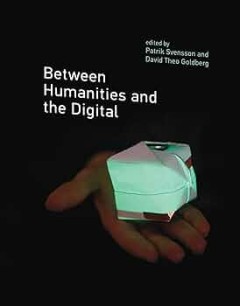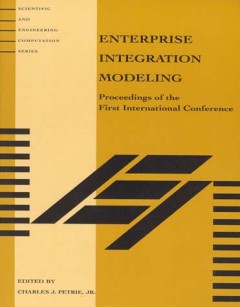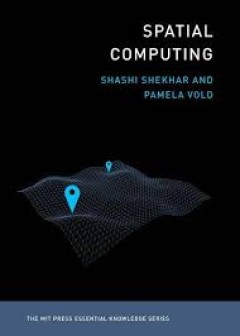Filter by

Georeferencing : the geographic associations of information
An introduction to the principles of unified georeferencing, which uses placename and geospatial referencing interchangeably across all types of information storage and retrieval systems.OCLC-licensed vendor bibliographic record.
- Edition
- -
- ISBN/ISSN
- 026208354X
- Collation
- 1 online resource (xiii, 260 pages) : illustrations, maps.
- Series Title
- Digital Libraries and Electronic Publishing
- Call Number
- 005 HIL g

Wirelessness: Radical Empiricism in Network Cultures
This title provides an account of the sensations associated with being entangled with wireless technologies that draws on the philosophical techniques of William James's radical empiricism.OCLC-licensed vendor bibliographic record.
- Edition
- -
- ISBN/ISSN
- 9780262289597
- Collation
- 1 online resource (255 pages) :illustrations, maps
- Series Title
- -
- Call Number
- -

Texture: Human expression in the age of communications overload
"Our workdays are so filled with emails, instant messaging, and RSS feeds that we complain that there's not enough time to get our actual work done. At home, we are besieged by telephone calls on landlines and cell phones, the beeps that signal text messages, and work emails on our BlackBerrys. It's too much, we cry (or type) as we update our Facebook pages, compose a blog post, or check to see…
- Edition
- -
- ISBN/ISSN
- 9780262289474
- Collation
- 1 online resource (ix, 303 pages)
- Series Title
- -
- Call Number
- -

Dynamical systems in neuroscience: The geometry of excitability and bursting
Explains the relationship of electrophysiology, nonlinear dynamics, and the computational properties of neurons, with each concept presented in terms of both neuroscience and mathematics and illustrated using geometrical intuition. In order to model neuronal behavior or to interpret the results of modeling studies, neuroscientists must call upon methods of nonlinear dynamics. This book offers a…
- Edition
- -
- ISBN/ISSN
- 9780262276078
- Collation
- 1 online resource (xvi, 441 pages) :illustrations.
- Series Title
- -
- Call Number
- -

Finite State Machines in Hardware: Theory and Design (with VHDL and SystemVer…
Modern, complex digital systems invariably include hardware-implemented finite state machines. The correct design of such parts is crucial for attaining proper system performance. This book offers detailed, comprehensive coverage of the theory and design for any category of hardware-implemented finite state machines. It describes crucial design problems that lead to incorrect or far from optima…
- Edition
- -
- ISBN/ISSN
- 9780262319096
- Collation
- 1 online resource (x, 337 pages) :illustrations
- Series Title
- -
- Call Number
- -

Between Humanities and the Digital
"Like most academic discourses, the Digital Humanities are a conversation in flux. Some would argue that the Digital Humanities are already a well-established field, pointing to the 20-year history of Humanities Computing. Others (me) see a new breed of academic with skills in both technology and the traditional humanities (the Platform Studies and Software Studies series), while others might i…
- Edition
- -
- ISBN/ISSN
- 9780262328364
- Collation
- 1 online resource (xii, 574 pages) :illustrations
- Series Title
- -
- Call Number
- -

Enterprise Integration Modeling: Proceedings of the First International Confe…
The goal of enterprise integration is the development of computer-based tools that facilitate coordination of work and information flow across organizational boundaries. These proceedings, the first on EI modeling technologies, provide a synthesis of the technical issues involved; describe the various approaches and where they overlap, complement, or conflict with each other; and identify probl…
- Edition
- -
- ISBN/ISSN
- 9780262291361
- Collation
- 1 online resource (xii, 563 pages) :illustrations.
- Series Title
- -
- Call Number
- -

Foundations of Systems Biology
An overview of the methodologies and techniques of the emerging field of systems biology.The emerging field of systems biology involves the application of experimental, theoretical, and modeling techniques to the study of biological organisms at all levels, from the molecular, through the cellular, to the behavioral. Its aim is to understand biological processes as whole systems instead of as i…
- Edition
- -
- ISBN/ISSN
- 9780262277204
- Collation
- 1 online resource (xv, 297 pages) :illustrations
- Series Title
- -
- Call Number
- -

Spatial computing
An accessible guide to the ideas and technologies underlying such applications as GPS, Google Maps, Pok?emon Go , ride-sharing, driverless cars, and drone surveillance. Billions of people around the globe use various applications of spatial computing daily--by using a ride-sharing app, GPS, the e911 system, social media check-ins, even Pok?emon Go . Scientists and researchers use spatial comput…
- Edition
- -
- ISBN/ISSN
- 9780262356800
- Collation
- 1 online resource (256 pages).
- Series Title
- -
- Call Number
- -

Things that keep us busy :the elements of interaction
We are surrounded by interactive devices, artifacts, and systems. The general assumption is that interactivity is good -- that it is a positive feature associated with being modern, efficient, fast, flexible, and in control. Yet there is no very precise idea of what interaction is and what interactivity means. In this book, Lars-Erik Janlert and Erik Stolterman investigate the elements of inter…
- Edition
- -
- ISBN/ISSN
- 9780262341813
- Collation
- 1 online resource (231 pages) :illustrations
- Series Title
- -
- Call Number
- -
 Computer Science, Information & General Works
Computer Science, Information & General Works  Philosophy & Psychology
Philosophy & Psychology  Religion
Religion  Social Sciences
Social Sciences  Language
Language  Pure Science
Pure Science  Applied Sciences
Applied Sciences  Art & Recreation
Art & Recreation  Literature
Literature  History & Geography
History & Geography